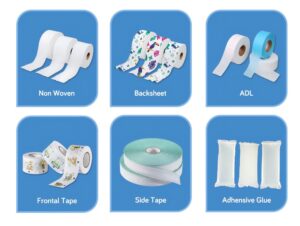
How Often to Change a Baby’s Diaper
When it comes to baby care, one question consistently tops the list for new parents: how often should I change my baby’s diaper? Navigating the world of disposable diapers, cloth

When it comes to baby care, one question consistently tops the list for new parents: how often should I change my baby’s diaper? Navigating the world of disposable diapers, cloth

Bringing a newborn home is a whirlwind of joy and learning. As new parents, you’re bombarded with information about everything from newborn sleep schedules to best baby formula. Choosing the

Potty training is a major milestone, but what happens to those leftover diapers? Instead of relegating them to the landfill, consider their untapped potential. This article explores the unexpected uses for

The global diaper market is a multi-billion dollar industry, and it’s poised for significant advancements over the next 5-10 years. These changes are driven by a growing consumer demand for

Forget the same old routine! The diaper market has exploded beyond standard disposable baby diapers. This blog dives into the exciting world of differentiated diaper options, exploring alternatives like cloth diapers, hybrid diapers, training

Planning for 2025? If you’re in the baby and mom product business, you know staying ahead of the curve is key. That means keeping an eye on the latest trends,
Incontinence care has emerged as a critical healthcare challenge, with the global adult diapers market projected to reach $29.8 billion by 2030 (Grand View Research, 2023). This surge reflects not
Adult diapers (also called incontinence briefs) play a vital role in modern patient care, with 35% of nursing home residents and 15% of hospitalized adults requiring continence management solutions (CDC,

For businesses involved in the production and distribution of baby diapers, a deep understanding of the various materials used and how to select them is crucial for success. The materials

The global feminine hygiene market is a complex and dynamic landscape, influenced by cultural norms, lifestyle variations, climate, and economic factors. For partners supplying sanitary napkins, menstrual pants, and related